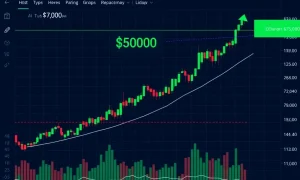Bitcoin investors clinging to traditional halving cycle theories may need to reconsider their strategies. According to prominent analyst James Check, Bitcoin market cycles actually follow adoption trends rather than the widely believed four-year halving pattern. This revelation could fundamentally change how investors approach cryptocurrency investments.
Understanding Bitcoin Market Cycles Differently
James Check presents a compelling alternative to conventional wisdom. He argues that Bitcoin has experienced three distinct cycles since 2011. Importantly, these cycles align with adoption phases rather than halving events. The analyst identifies specific transition points that mark cycle changes.
Check outlines three clear phases:
- 2011-2018 Adoption Cycle: Driven by early retail investor participation
- 2018-2022 Adolescence Cycle: Characterized by leveraged trading and volatility
- 2022-Present Maturity Cycle: Fueled by institutional adoption and stability
Challenging the Halving Cycle Theory
The traditional halving cycle theory suggests predictable four-year patterns. However, Check’s analysis indicates that adoption trends provide better indicators. Market structure changes and institutional participation now play larger roles. Consequently, past patterns may not reliably predict future movements.
Recent market behavior supports this perspective. Institutional ETF inflows and macroeconomic factors appear more influential than halving events. Moreover, the current cycle shows extended bullish characteristics unlike previous cycles.
Institutional Impact on Current Bitcoin Market Cycles
Institutional participation has dramatically altered market dynamics. Major financial firms now hold substantial Bitcoin positions. Additionally, approved Bitcoin ETFs have created new demand channels. These factors potentially extend cycle durations beyond traditional expectations.
Several analysts echo Check’s observations. Bitwise CIO Matthew Hougan recently declared the four-year cycle potentially over. Similarly, technical analysts note liquidity dynamics outweigh halving events. Macroeconomic conditions now significantly influence Bitcoin’s price movements.
Future Implications for Bitcoin Investors
Investors must adapt to these new market realities. Traditional timing strategies based on halving events may prove less effective. Instead, monitoring adoption metrics and institutional flows becomes crucial.
Glassnode analysts offer contrasting views, suggesting traditional patterns persist. However, they acknowledge recent profit-taking indicates late-cycle behavior. Ultimately, multiple factors now influence Bitcoin market cycles simultaneously.
FAQs About Bitcoin Market Cycles
What are the main factors driving Bitcoin market cycles according to James Check?
Check identifies adoption trends and market structure changes as primary drivers, rather than halving events.
How many cycles has Bitcoin experienced according to this new theory?
The analysis identifies three distinct cycles: adoption (2011-2018), adolescence (2018-2022), and maturity (2022-present).
Why might the current cycle be different from previous ones?
Institutional participation, ETF approvals, and macroeconomic factors have created extended bullish conditions beyond traditional patterns.
Do all analysts agree with this assessment?
No, some analysts like those at Glassnode believe traditional cycle patterns still apply, though with modified characteristics.
How should investors adjust their strategies based on this analysis?
Investors should focus on adoption metrics, institutional flows, and macroeconomic indicators rather than solely relying on halving event timing.
What role do macroeconomic factors play in current Bitcoin market cycles?
Dollar liquidity, interest rates, and global economic conditions now significantly influence Bitcoin’s price movements and cycle durations.








